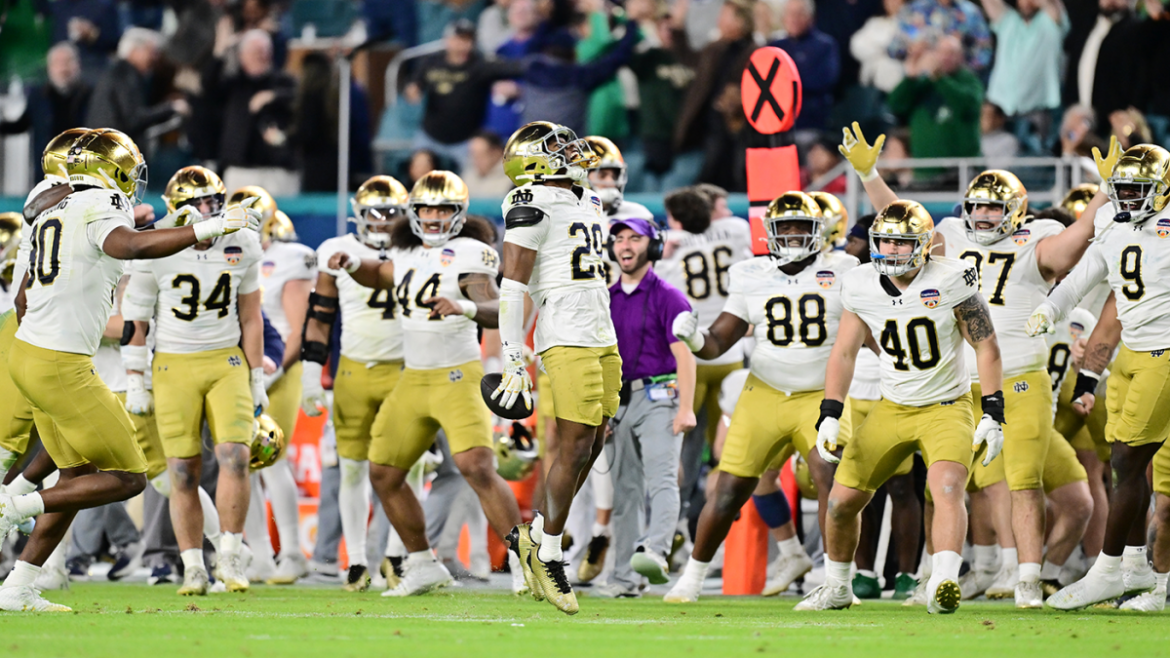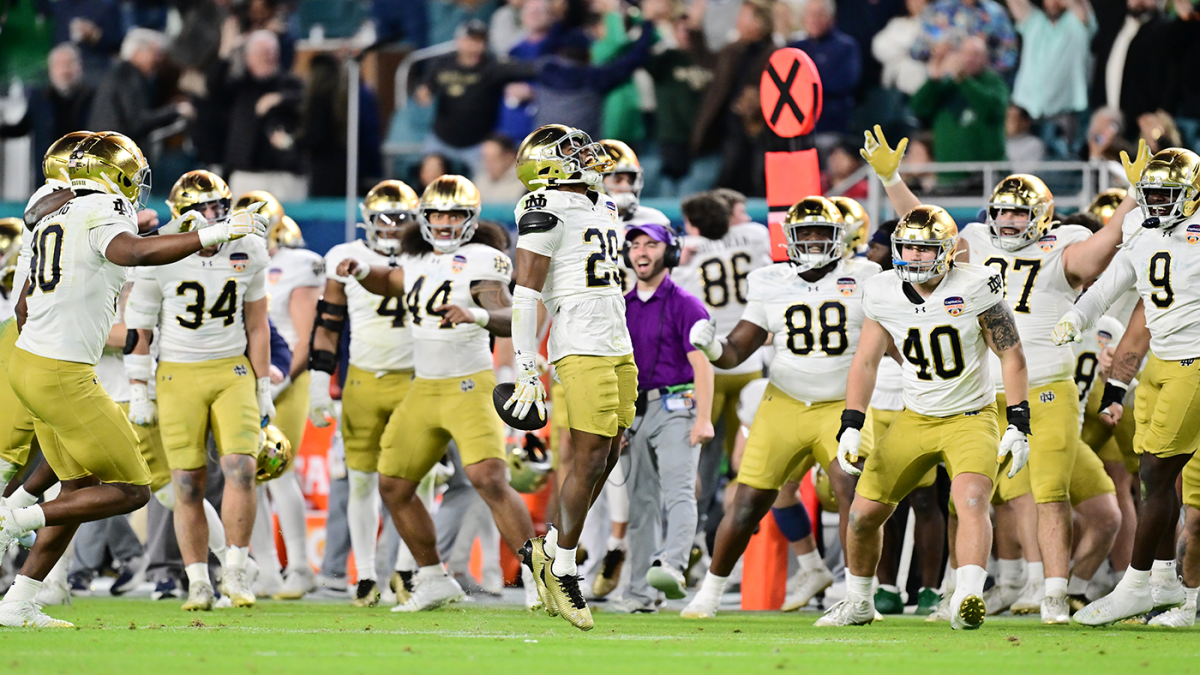The recent transformations in the College Football Playoff (CFP) seeding process mark a pivotal shift in the structure of college football’s postseason landscape, especially leading into the 2025-26 season. At the heart of these changes lies a move toward a “straight seeding” system, fundamentally altering how teams, including independents like Notre Dame, are placed and rewarded with byes. This analysis explores the new system’s origins, mechanics, and ramifications—with particular emphasis on Notre Dame’s unique positioning and the broader competitive dynamics.
Background and Context: Evolution to the New Format
Traditionally, the CFP favored conference champions by allocating the top four seeds—and their attendant first-round byes—to the highest-ranked conference winners. This “automatic bye” structure meant teams outside of conferences, like Notre Dame, had limited opportunities to reap such postseason advantages. The 12-team playoff, rolled out recently, extends participation but retains some conference-centric protection to seedings, which raised questions about fairness and inclusion.
Increasing pressure from multiple fronts—the Power 5 conferences such as the Big Ten and SEC, independent programs, media, and stakeholders—precipitated reconsideration of this system. The desire for a more transparent, equitable, and performance-reflective seeding process has culminated in the adoption of straight seeding based purely on the selection committee’s final rankings. The unanimous approval requirement—demanding consensus among the 10 FBS conferences plus Notre Dame—reflects the collective endorsement needed for such foundational changes.
Mechanics of the New Seeding Process
Under the revamped system, seeds are assigned strictly in line with the committee’s top 12 rankings without guaranteeing first-round byes to automatic conference champions. This “straight seeding” eradicates previous manipulations where champions could be elevated above non-champions simply due to their conference title status.
– Top Four Seeds and Byes: The four highest-ranked teams, regardless of conference championship status, receive first-round byes.
– Conference Champions No Longer Guaranteed Top Seeds: Winning a conference no longer assures a top-four seed or a bye.
– Implications for Independents: Programs not affiliated with a conference, especially Notre Dame, can now earn a bye if ranked in the top four—a significant departure from the prior system which excluded them from this possibility.
This approach aims to more closely align seeding and rewards with on-field performance and committee assessments rather than rigid conference-based perks.
Notre Dame’s Unique Position: From Outsider to Beneficiary
Notre Dame, as one of the highest-profile independent programs in college football, historically faced postseason handicaps due to its non-conference status. Under the old CFP model, no matter how dominant their regular season, Notre Dame could not secure a top-four seed or first-round bye and often began playoff runs in earlier rounds against taxing opponents.
The new seeding format transforms this reality:
– First-Round Bye Eligibility: Notre Dame can now achieve a top-four seed if their ranking warrants it, granting them a first-round bye.
– Enhanced Competitive Equity: This alignment positions Notre Dame more fairly with Power 5 conference champions whose performance meets similar marks.
– Strategic Scheduling and Revenue: Greater chance for high seeding could incentivize Notre Dame’s scheduling and NIL opportunities, improving their competitive and financial positioning.
Interestingly, commentary and social media reactions underscore Notre Dame as perhaps the biggest winner in this shift. The Irish, who previously faced disparity in postseason treatment, now have a tangible postseason advantage for sustained excellence.
Impact on Conferences and Other Stakeholders
The shift away from guaranteeing byes to conference champions introduces several ripples:
– Power 5 Realignments: Conferences like the Big Ten and SEC, initially supporting the new system, confront scenarios where a conference championship might not translate into a top seed or bye—changing stakes for the conference title game.
– Competitive Balance: The straight seeding model purports to reward the truly best teams regardless of conference affiliation, potentially increasing unpredictability and excitement in playoff brackets.
– Financial Considerations: Distributions reportedly range from $12-14 million per participant within the ACC and Big 12, with Notre Dame slated to earn $12.5 million plus bonuses—a structure influenced by playoff positioning but also reflective of broader shifts to parity.
– Scheduling Incentives: New calls for rewarding tougher schedules and maximizing home games stem from this change, further shaping team and conference strategies for the regular season.
Challenges and Controversies
Despite widespread support, the new system is not without criticism or complexity:
– Unanimity Requirements: The need for consensus among all conferences and Notre Dame can delay or limit potential refinements.
– Potential Unfair Outcomes: Some argue that seeding non-champions above conference champions may undermine the value of conference titles.
– Strategic Gaming: Teams might attempt to manipulate scheduling or rankings to fit seeding models, potentially skewing fairness.
– Ongoing Debates: Discussions over whether this model truly maximizes December weekends, accommodates championship dilemmas, or ensures the best teams advance remain active among analysts and officials.
The Path Forward: What Lies Ahead?
With the seeding changes set for implementation in the 2025-26 season, stakeholders are closely watching outcomes:
– Monitoring Impact: How will the playoff experience change for teams like Notre Dame? Will the elimination of automatic byes for conference champs elevate overall fairness and competitive drama?
– Possible Tweaks: Notre Dame’s athletic director hinted at potential further refinements, suggesting that the system will evolve through continued dialogue among conferences and committee members.
– Future Expansion and Formats: Broader postseason format adjustments are possible, with ongoing debates about playoff size, scheduling fairness, and postseason scheduling logistics.
—
Conclusion: A More Level Playing Field or New Set of Complexities?
The College Football Playoff’s embrace of straight seeding marks a momentous stride toward reframing postseason access and seeding. By shedding the former rigid privileging of conference champions and enabling independent titans like Notre Dame to earn first-round byes based purely on merit, the system promotes a more transparent and performance-driven playoff architecture.
While this change advances competitive equity and narrative richness, it introduces fresh challenges and questions about the ultimate definition of fairness and value within college football’s postseason. As the 2025 season approaches, all eyes will be on the outcomes of these reforms—how they affect team strategies, fan engagement, and the evolving identity of college football’s grandest stage.
—
Stay ahead of college football’s new playoff seeding game with expert insights tailored for Notre Dame fans.





